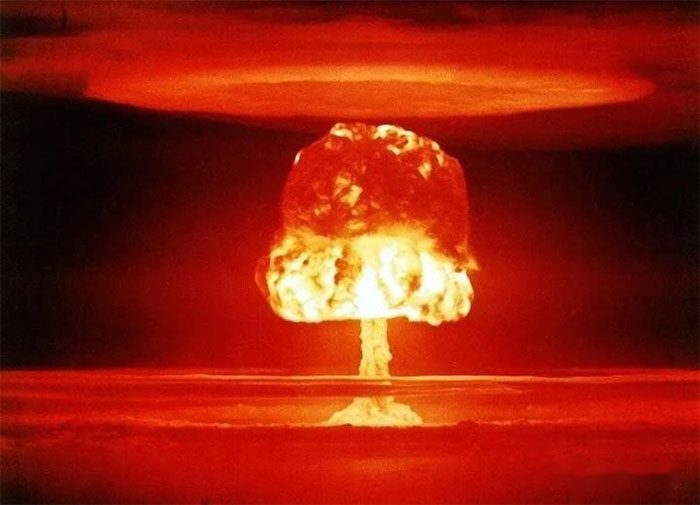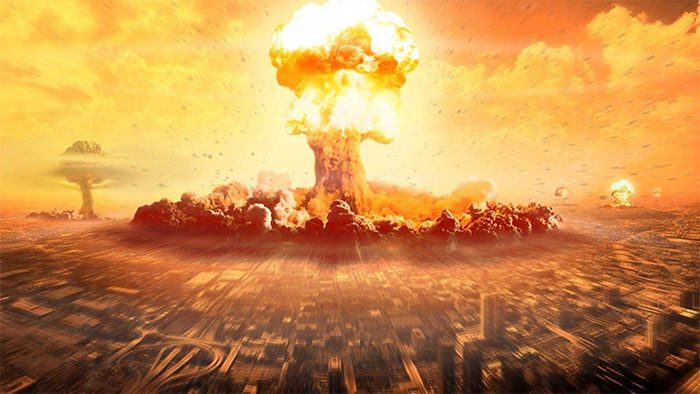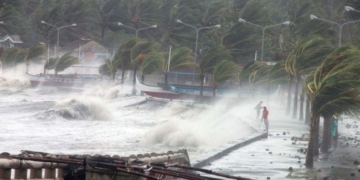The recorded history of humanity spans only a few thousand years, and we have only entered the industrial civilization for a few hundred years. In contrast, the Earth has existed for 4.57 billion years and has undergone countless upheavals.
Life on Earth has also evolved and changed over different periods; for instance, dinosaurs dominated the planet for over 100 million years. Today, while the Earth remains stable, humanity is still concerned that we may not be able to withstand certain natural disasters in the future, leading to our extinction. Alternatively, we may end up destroying the Earth ourselves with nuclear bombs. But is this truly a possibility?
When nuclear weapons first appeared in 1945, they astonished the world with their devastating power. However, the atomic bombs at that time were merely early-stage products and not fully developed. Take the Hiroshima bomb, Little Boy, for example; its explosive yield was less than 5% of its potential.
The most powerful nuclear bomb is the hydrogen bomb, which, in its upgraded theoretical version, could achieve a strength of over 10 billion tons of TNT. The largest nuclear bomb ever detonated in history was the Tsar Bomba, detonated by the Soviet Union in 1961, with an explosive yield of up to 50 megatons of TNT. For humanity, the Tsar Bomba has an incredibly terrifying power, but for the Earth, that amount of explosive energy is merely a scratch compared to the energy released by natural disasters like major earthquakes.

The largest nuclear bomb ever detonated in history was the Tsar Bomba.
65 million years ago, when fragments of the asteroid Tutastina struck the Earth, it left a crater with an average diameter of 180 km, causing massive earthquakes, tsunamis, and supervolcano eruptions worldwide! The energy scale of this impact is equivalent to 100 trillion tons of TNT, or the equivalent of 2 million Tsar Bombas! Yet, our planet still exists and was not destroyed.
Humanity claims to be the master of the Earth, but in reality, we find it very difficult to control our own fate, as we are vulnerable when faced with various types of natural disasters.
Currently, there are over 10,000 nuclear bombs in the world, but very few have explosive yields in the tens of millions of tons; even millions of tons is a relatively small number. If tens of thousands of these nuclear bombs were to explode simultaneously, their combined explosive power would certainly be astounding. However, as previously mentioned, this energy would not significantly impact the Earth, making the destruction of the planet highly unlikely.
The great scientist Einstein once said that matter contains an immense amount of energy. However, whether through nuclear fusion or fission, the theoretical energy conversion rates achievable remain very limited, and actual conversion rates are always lower than theoretical expectations.

If all human nuclear bombs were to explode, the living environment would be destroyed.
Humanity has only recently mastered nuclear energy, and we have not yet fully controlled nuclear fusion reactions. In terms of energy control, we have only achieved initial successes. Theoretically, if we could master antimatter energy and achieve a 100% mass-to-energy conversion rate, then we could potentially reach the capability to completely destroy the Earth. However, theory remains just theory; to date, we have not been able to prove the validity of antimatter, and no one has successfully sought or harvested antimatter energy.
Therefore, if all current human nuclear bombs were to explode simultaneously, what would be destroyed would certainly not be the Earth. Instead, it would be the living environment of humanity and all species on our planet, potentially leading to mass extinction, while the Earth would continue to exist, just as it did after previous mass extinction events.
Atomic bombs (A-bombs) utilize the principle of fission to generate energy. Fission occurs when neutrons are fired into an atomic nucleus, releasing a tremendous amount of energy and radiation.

To achieve nuclear fusion, temperatures of up to 100 million degrees Celsius are required.
After many experiments, scientists have discovered that Uranium-235 and Plutonium are the most suitable elements for achieving fission reactions. Atomic bombs derive their energy from a chain of fission reactions; the more reactions that occur, the greater the explosive yield.
The two bombs dropped by the United States on the cities of Hiroshima and Nagasaki in 1945 were fission bombs, also known as atomic bombs.
Thermonuclear bombs (hydrogen bombs or H-bombs) utilize the principle of fusing two hydrogen isotope nuclei, Deuterium and Tritium, to create a heavier nucleus, Helium, while simultaneously releasing energy.
To achieve nuclear fusion, temperatures of up to 100 million degrees Celsius are required. Therefore, hydrogen bombs typically contain an atomic bomb (A-bomb) to generate sufficient energy to facilitate the fusion process leading to the bomb’s explosion. As a result, H-bombs can produce explosions of up to 10,000 kilotons, hundreds or thousands of times more powerful than A-bombs. Currently, only six countries officially possess hydrogen bombs: the United States, the United Kingdom, France, Russia, India, and China.


















































